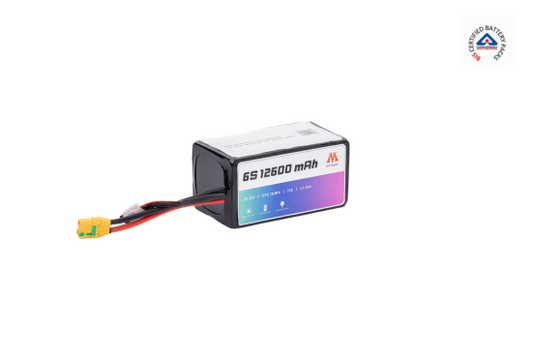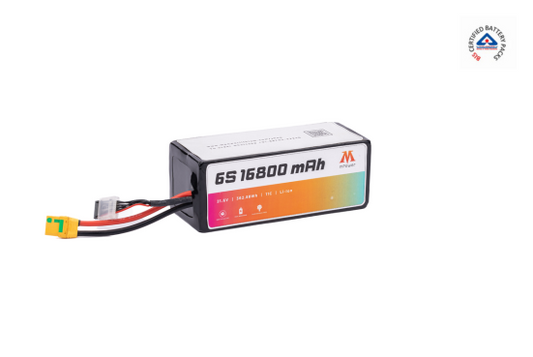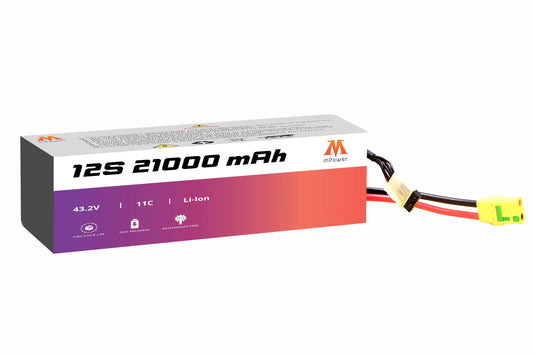
In recent years, drones have gone from being hobbyist gadgets to indispensable tools across industries—agriculture, surveillance, logistics, and cinematography, to name just a few. However, as drone capabilities evolve, so does the demand for more advanced drone batteries. In 2025, the expectations are higher than ever: longer flight times, faster charging, enhanced safety, and the ability to withstand extreme environments.
At the heart of all these advancements lies a single defining factor—the drone battery. It determines how far, how fast, and how effectively a drone can function. But despite rapid innovation, the battery technology in drones still grapples with significant engineering roadblocks. As a leader in energy solutions, mPower Batteries is acutely aware of these obstacles and is actively working to develop smarter, stronger, and more efficient battery systems for next-gen aerial solutions.
Here are the three major engineering challenges drone batteries must overcome in 2025 to meet the rising demands of commercial and industrial drone applications.
Increasing Energy Density Without Adding Weight
One of the most pressing challenges in drone battery technology is boosting energy density—how much energy a battery can store per unit of weight. Drones need lightweight power sources to stay airborne longer, but higher energy typically means more mass, and that extra weight negatively impacts flight time and maneuverability.
In 2025, the push is toward achieving a balance that still seems elusive: packing more power into the same or smaller footprint. While solid-state batteries and lithium-sulfur chemistries show promise, they face hurdles like poor cycle life and complex manufacturing processes. Engineers are working relentlessly to overcome issues like electrode degradation and electrolyte instability, aiming for batteries that are not only lighter but also stable and high-performing over many charge cycles.
At mPower Batteries, our R&D team is focused on optimizing lithium-based chemistries to deliver the highest energy-to-weight ratio, ensuring that drones can fly longer missions without compromising on payload or safety.
Thermal Management and Safety Controls
As drone operations scale in complexity and frequency, especially in high-temperature or high-demand environments, thermal regulation has become a critical engineering concern. Drone batteries generate heat during both discharge (flight) and recharge cycles, and without adequate thermal management, the risk of overheating, swelling, or even combustion rises significantly.
Thermal management systems must evolve beyond passive cooling. Engineers are exploring active cooling technologies, heat-dissipating battery casings, and smarter battery management systems (BMS) that can monitor real-time temperature and make adjustments instantly.
Drone battery manufacturers like mPower Batteries are investing in embedded temperature sensors and AI-driven BMS to predict and prevent thermal runaways before they pose a danger. Enhanced safety isn’t just a feature—it’s a non-negotiable requirement as drone usage expands in urban environments and for critical missions.
Faster Charging Without Damaging the Battery
In an ideal scenario, drones would spend less time charging and more time flying. However, achieving fast-charging capabilities without degrading the battery over time is a persistent challenge. Fast charging can lead to lithium plating, increased internal resistance, and premature battery failure.
In 2025, this issue will be magnified as delivery drones, emergency response UAVs, and agricultural drones are expected to work longer shifts with shorter breaks. Traditional charging cycles that take hours are no longer viable for commercial use.
Engineering teams are now experimenting with novel anode materials such as silicon, alternative electrolytes, and pulse-charging techniques to allow faster current intake without triggering degradation. The goal is to safely reduce charging time from hours to minutes while maintaining or extending overall battery life.
As one of the industry’s most forward-looking battery developers, mPower Batteries is actively testing next-generation charging algorithms and materials science solutions to address this bottleneck. We aim to redefine what’s possible in terms of turnaround time for high-performance drone operations.
Looking Ahead: The Future of Drone Battery Innovation
The global drone industry is projected to experience growth, and batteries are the linchpin of this growth. To unlock the next wave of innovation, drone batteries must meet unprecedented expectations in terms of efficiency, durability, and intelligence.
While 2025 will bring its own set of challenges, it also opens doors for revolutionary breakthroughs in energy storage. Companies like mPower Batteries are at the forefront of this transformation, developing battery technologies that power not just longer flights but safer, smarter, and more sustainable drone missions.
As the skies get busier and the use cases for drones diversify, the importance of a reliable, high-performance drone battery has never been clearer. The road ahead is electric—and it’s only just beginning.












